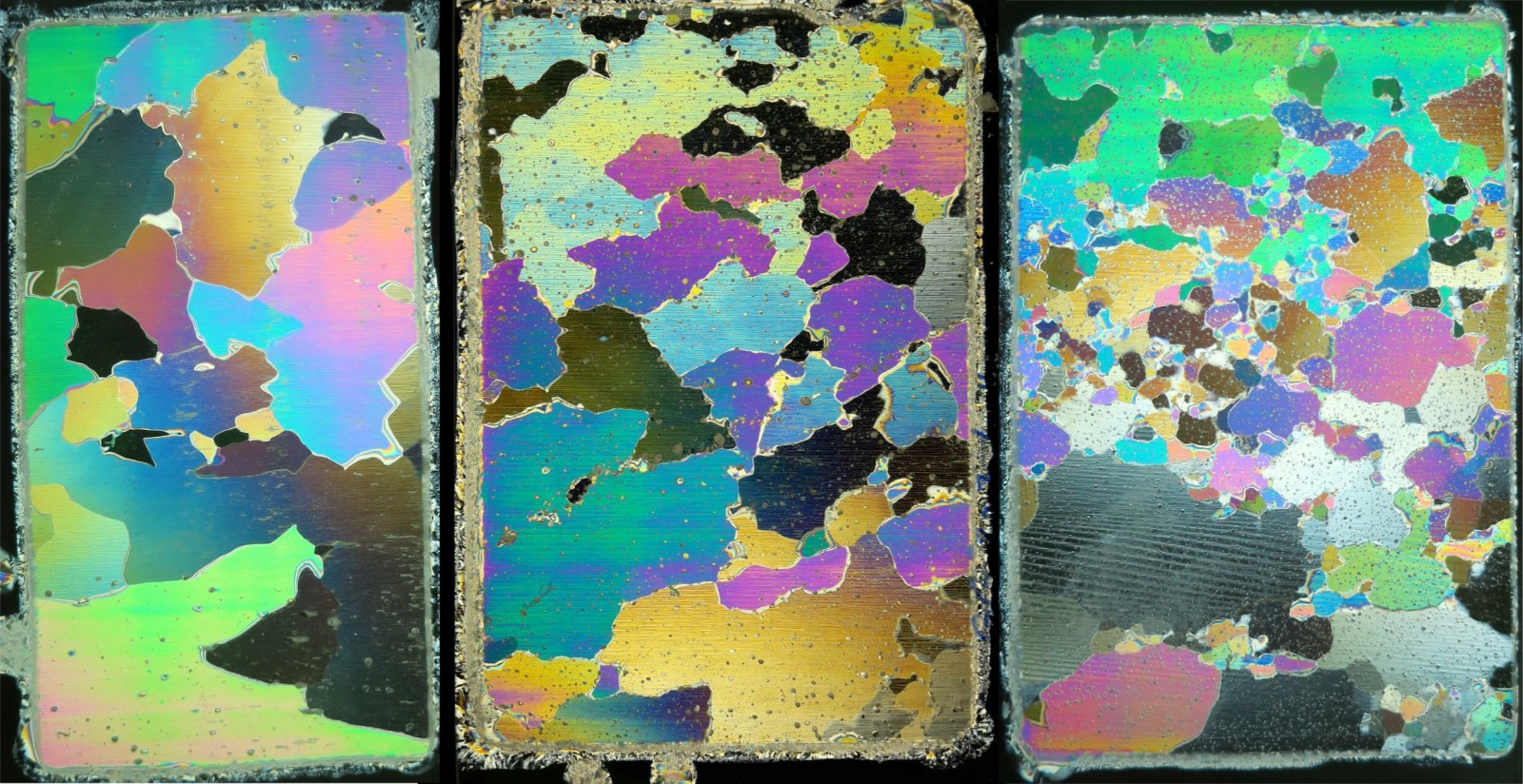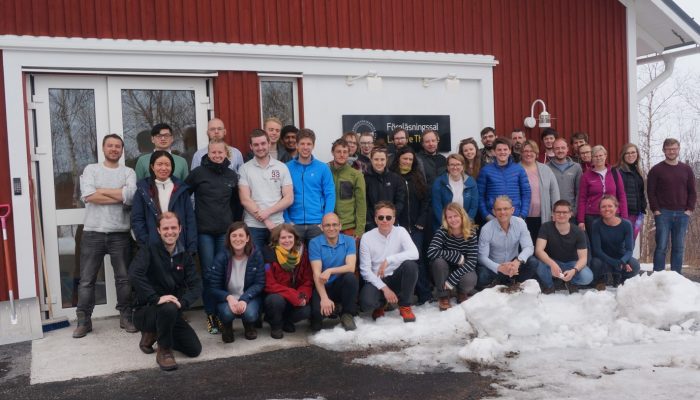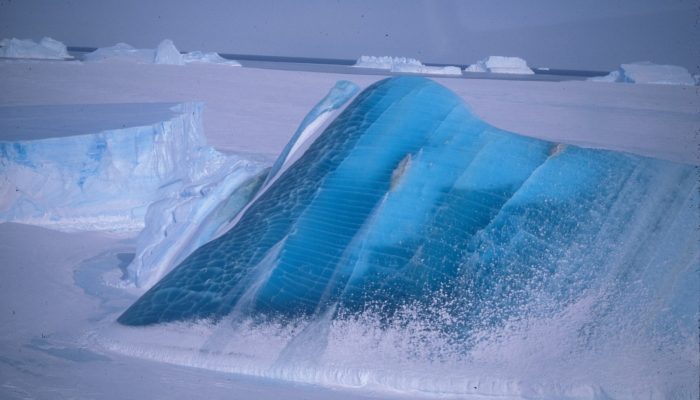Early career scientists studying polar climate are one lucky group! The 29 young scientists who took part in the 10 day Polar Prediction School this year were no exception. They travelled to Arctic Sweden to learn and discuss the challenges of polar prediction and to gain a better understanding of the physical aspects of polar research. The Year of Polar Prediction The Year of Polar Prediction (YO ...[Read More]
Image of the Week – Antarctica: A decade of dynamic change
Whilst we tend to think of the ice flow in Antarctica as a very slow and steady process, the wonders of satellites have shown over the last two decades it is one of the most dynamic places on Earth! This image of the week maps this dynamical change using all the satellite tools at a scientist’s disposal with novel statistical methods to work out why the change has recently been so rapid. Why do ...[Read More]
Image of the Week — Biscuits in the Permafrost
In Svalbard, the snow melts to reveal a mysterious honeycomb network of irregular shapes (fig. 1). These shapes may look as though they have been created by a rogue baker with an unusual set of biscuit cutters, but they are in fact distinctive permafrost landforms known as ice-wedge polygons, and they play an important role in the global climate. Ice-wedge polygons: Nature’s biscuit-cutter In wint ...[Read More]
Image of the Week – Cure from the Cold?

Humans rely on antibiotics for survival, but over time they are becoming less effective. So-called ‘superbugs’ are developing resistance to our most important drugs. The key to this global issue may be found in the cryosphere, where extreme microbiologists are hunting for new compounds in the cold that could help us win the war against antimicrobial resistance. Discovering drugs in Earth’s coldest ...[Read More]
Image of the Week – Why is ice colourful?

When you think of glacier ice, what colour first springs to mind? Maybe white, blue or transparent? Well, glacier ice can, in fact, be mesmerising and multi-coloured! Our image of the week shows thin sections of glacier ice under polarised light. These sections were cut from block samples of two Alpine glaciers in Switzerland (Chli Titlis and Grenzgletscher). In these images the individual ice c ...[Read More]
Image of the week — Making pancakes
It’s pitch black and twenty degrees below zero; so cold that the hairs in your nose freeze. The Arctic Ocean in autumn and winter is inhospitable for both humans and most scientific equipment. This means there are very few close-up observations of sea ice made during these times. Recently, rapidly declining coverage of sea ice in the Arctic Ocean due to warming climate and the impending likelihood ...[Read More]
Image of the Week — Seasonal and regional considerations for Arctic sea ice changes
The Arctic sea ice is disappearing. There is no debate anymore. The problem is, we have so far been unable to model this disappearance correctly. And without correct simulations, we cannot project when the Arctic will become ice free. In this blog post, we explain why we want to know this in the first place, and present a fresh early-online release paper by Ingrid Onarheim and colleagues in Bergen ...[Read More]
Image of the Week – Edible cryosphere at EGU 2018!

It is time again for the annual family meeting of the European Geosciences Union! A lot of interesting talks, posters and events are waiting for you! But this also means you will have to use your brain a lot to concentrate and understand what is going on… Every year, around 15,000 geoscientists meet in Vienna for the EGU General Assembly (see our guide to navigating EGU 2018). It is an exciting ev ...[Read More]
Image of the Week – Super-cool colours of icebergs
It is Easter weekend! And as we do not want you to forget about our beloved cryosphere, we provide you with a picture nearly as colourful as the Easter eggs: very blue icebergs! What makes them so special? This is what this Image of the Week is about… What are icebergs made of? Icebergs are chunks of ice which break off from land ice, such as glaciers or ice sheets (as you’ll know if you rem ...[Read More]
A brief guide to Navigating EGU 2018!

Are you going to the EGU General Assembly in Vienna in just over a week? If so, read on for a quick guide to navigating the week: Where to start, what to see and how to meet people and enjoy yourself! After all, the meeting is as much about the opportunities to meet scientists from all over the world as it is about the science itself. How on Earth do I know what is going on?! The EGU General Assem ...[Read More]


